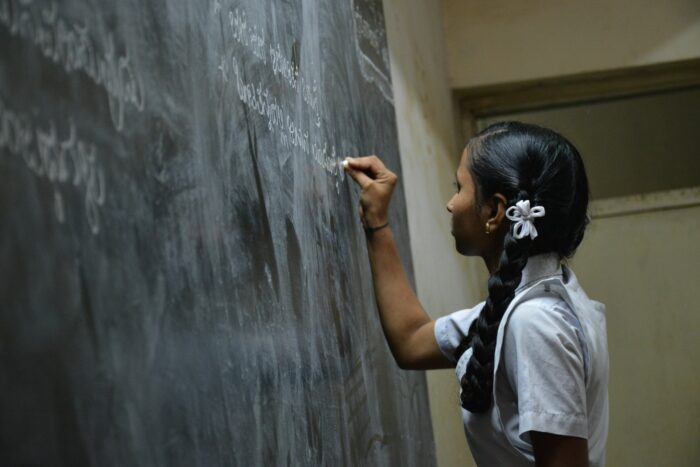89% of girls around the world complete primary education. However, only 77% complete lower secondary education (grades 5-8). In low income counties, the portion of girls who complete primary education can be as low as ⅔, and ⅓ for lower secondary school. The World Bank explores the cost of not educating girls in its article.
The cost of not educating girls
Simply having primary education is not enough. The World Bank estimates that the barriers to completing 12 years of education for girls can cost the world between $15 trillion to $30 trillion dollars in lifetime productivity and earnings.
The report also suggests a few global impacts of not educating girls. It reports on how education can transform the world in six areas.

Photo by Nikhita S on Unsplash.
The six areas of transformation
- Earnings and standards of living: Women who have completed secondary school education earn almost twice as much as those who have no education.
- Fertility and population growth: universal secondary education for girls can lead to a decrease in global population and total fertility rates.
- Child marriage and early childbearing: The report estimates that universal secondary education for girls can diminish child marriages (marriage before the age of 18). It will also reduce women’s risk of early childbearing having a first child before the age of 18).
- Health, nutrition, and well-being: Universal secondary education for girls will increase their knowledge of diseases and improve their ability to make health-related decisions, especially in developing countries. Education can also improve women’s psychological wellbeing by reducing partner violence. Proper education for women also reduces risks of under-five child mortality and malnutrition.
- Social capital and institutions: Universal secondary education for girls can increase women’s engagement in altruistic behaviors. As well, education can improve their ability to rely on friends when needed.
- Agency and decision-making: Universal secondary education for girls can increase women’s decision-making abilities in the household. It also allows them to better assess the quality of services and increases the likelihood of birth registration.
The article concludes by stating that many benefits of proper education can apply to both men and women. However, the cost of not educating girls is particularly high as education for girls has a strong relationship with child marriage, early childbearing and their children’s outcomes.
Categorised in: Uncategorized
This post was written by Helen
